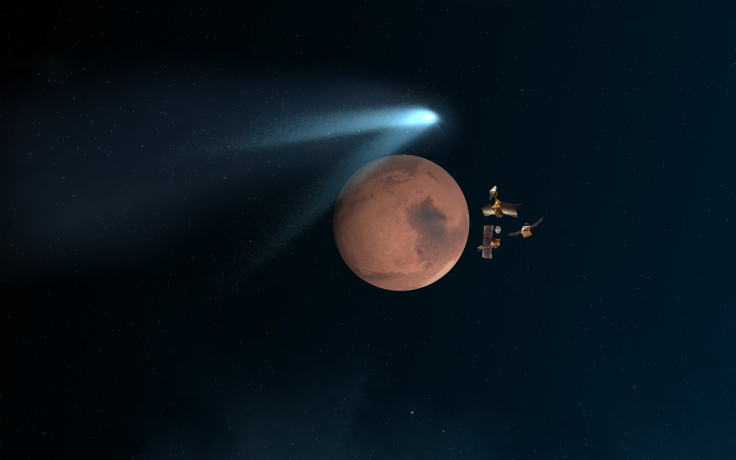Comet Siding Spring’s Mars Flyby: 3 NASA Orbiters Safe After Sheltering Behind Red Planet

Three NASA orbiters around Mars remained unharmed after each took shelter behind the red planet when Comet C/2013 A1, also known as Siding Spring, hurtled past the planet Sunday.
Mars Odyssey, Mars Reconnaissance Orbiter and the Mars Atmosphere and Volatile Evolution, or MAVEN -- all part of a campaign to study Siding Spring -- confirmed they were alive and well Sunday after the comet sped within about 87,000 miles of Mars. The closest approach by the comet's nucleus came at about 2:27 p.m. EDT, according to NASA.
“The telemetry received from Odyssey this afternoon confirms not only that the spacecraft is in fine health but also that it conducted the planned observations of comet Siding Spring within hours of the comet's closest approach to Mars,” Chris Potts, manager of the Odyssey mission, said in a statement.
The resulting images from the observations made by Odyssey are expected in coming days, while the orbiter’s imaging system is also scheduled to record a combined image of the comet and a portion of Mars later this week. In addition, the spacecraft's Neutron Spectrometer and High Energy Neutron detector will be used to assess the possible effects on Mars' atmosphere of dust and gas from the comet.
According to NASA, the observations of the comet are expected to yield fresh clues to the solar system's earliest days more than 4 billion years ago because it's Siding Spring's first visit this close to the sun from the outer solar system's Oort Cloud.
Operations teams also confirmed that the Mars Reconnaissance Orbiter and the MAVEN orbiter were in working condition after about three hours of precautions against a possible collision with high-velocity dust particles released by Siding Spring, which approached Mars at about 125,000 mph.
“We're glad the spacecraft came through, we're excited to complete our observations of how the comet affects Mars, and we're eager to get to our primary science phase,” Bruce Jakosky of the University of Colorado, Boulder, and a principal investigator of the MAVEN mission, said in a statement.
© Copyright IBTimes 2024. All rights reserved.






















